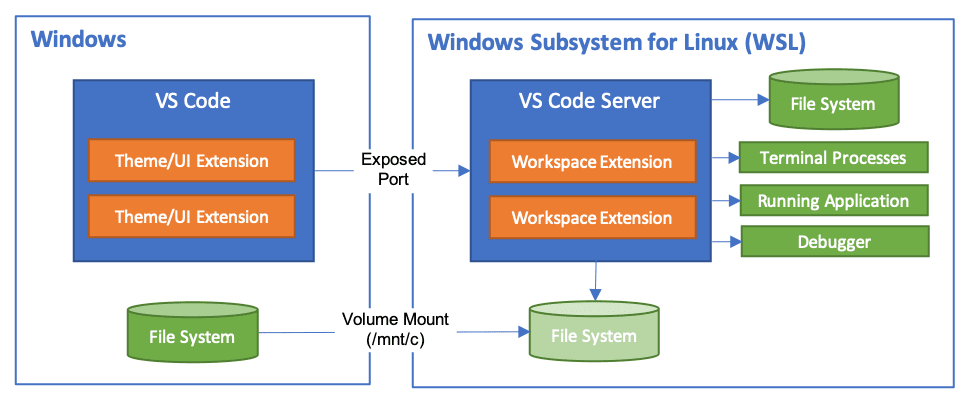Wget Windows Binary
GNU Wget is a free network utility to retrieve files from the World Wide Web using HTTP and FTP, the two most widely used Internet protocols. It works non-interactively, thus enabling work in the background, after having logged off. Other Git for Windows downloads Git for Windows Setup. 32-bit Git for Windows Setup. 64-bit Git for Windows Setup. Git for Windows Portable ('thumbdrive edition') 32-bit Git for Windows Portable. 64-bit Git for Windows Portable. The current source code release is version 2.30.0. If you want the newer version, you can build it from the source code. Source, binary for wget 1.8.2, ssl enabled (get these 096 ssllibs from or it won't run). Sources are as original, just rezipped in case you can't handle the original tar.gz archive. 1.8.2 is a bugfix release that fixes many bugs reported for 1.8.1.
Your download is starting...
You are downloading the latest (2.30.0) 32-bit version of Git for Windows. This is the most recent maintained build. It was released 8 days ago, on 2021-01-14.
Click here to download manually, if your download hasn't started.
Other Git for Windows downloads
Git for Windows Setup
32-bit Git for Windows Setup.
64-bit Git for Windows Setup.
Git for Windows Portable ('thumbdrive edition')
32-bit Git for Windows Portable.
64-bit Git for Windows Portable.
The current source code release is version 2.30.0. If you want the newer version, you can build it from the source code.
Now What?
Now that you have downloaded Git, it's time to start using it.

What does WGET Do?
Once installed, the WGET command allows you to download files over the TCP/IP protocols: FTP, HTTP and HTTPS.
If you’re a Linux or Mac user, WGET is either already included in the package you’re running or it’s a trivial case of installing from whatever repository you prefer with a single command.
Unfortunately, it’s not quite that simple in Windows (although it’s still very easy!).

To run WGET you need to download, unzip and install manually.
Install WGET in Windows 10
Download the classic 32 bit version 1.14 here or, go to this Windows binaries collection at Eternally Bored here for the later versions and the faster 64 bit builds.
Here is the downloadable zip file for version 1.2 64 bit.
If you want to be able to run WGET from any directory inside the command terminal, you’ll need to learn about path variables in Windows to work out where to copy your new executable. If you follow these steps, you’ll be able to make WGET a command you can run from any directory in Command Prompt.
Run WGET from anywhere
Firstly, we need to determine where to copy WGET.exe.
After you’d downloaded wget.exe (or unpacked the associated distribution zip files) open a command terminal by typing “cmd” in the search menu:
We’re going to move wget.exe into a Windows directory that will allow WGET to be run from anywhere.
First, we need to find out which directory that should be. Type:
path
You should see something like this:
Thanks to the “Path” environment variable, we know that we need to copy wget.exe to the c:WindowsSystem32 folder location.
Go ahead and copy WGET.exe to the System32 directory and restart your Command Prompt.
Restart command terminal and test WGET
If you want to test WGET is working properly, restart your terminal and type:
wget -h
If you’ve copied the file to the right place, you’ll see a help file appear with all of the available commands.
So, you should see something like this:
Now it’s time to get started.
Get started with WGET
Seeing that we’ll be working in Command Prompt, let’s create a download directory just for WGET downloads.
To create a directory, we’ll use the command md (“make directory”).
Change to the c:/ prompt and type:

md wgetdown
Then, change to your new directory and type “dir” to see the (blank) contents.
Now, you’re ready to do some downloading.
Example commands
Once you’ve got WGET installed and you’ve created a new directory, all you have to do is learn some of the finer points of WGET arguments to make sure you get what you need.
The Gnu.org WGET manual is a particularly useful resource for those inclined to really learn the details.
If you want some quick commands though, read on. I’ve listed a set of instructions to WGET to recursively mirror your site, download all the images, CSS and JavaScript, localise all of the URLs (so the site works on your local machine), and save all the pages as a .html file.
To mirror your site execute this command:
wget -r https://www.yoursite.com

To mirror the site and localise all of the urls:
wget --convert-links -r https://www.yoursite.com
To make a full offline mirror of a site:
wget --mirror --convert-links --adjust-extension --page-requisites --no-parent https://www.yoursite.com
To mirror the site and save the files as .html:
wget --html-extension -r https://www.yoursite.com
To download all jpg images from a site:
wget -A '*.jpg' -r https://www.yoursite.com
Wget For Windows Binary
For more filetype-specific operations, check out this useful thread on Stack.
Wget For Windows 64 Bit
Set a different user agent:
Some web servers are set up to deny WGET’s default user agent – for obvious, bandwidth saving reasons. You could try changing your user agent to get round this. For example, by pretending to be Googlebot:
wget --user-agent='Googlebot/2.1 (+https://www.googlebot.com/bot.html)' -r https://www.yoursite.com
Wget “spider” mode:
Wget can fetch pages without saving them which can be a useful feature in case you’re looking for broken links on a website. Remember to enable recursive mode, which allows wget to scan through the document and look for links to traverse.
wget --spider -r https://www.yoursite.com
You can also save this to a log file by adding this option:
Wget Windows Equivalent
wget --spider -r https://www.yoursite.com -o wget.log
Winwget 1.20
Enjoy using this powerful tool, and I hope you’ve enjoyed my tutorial. Comments welcome!
